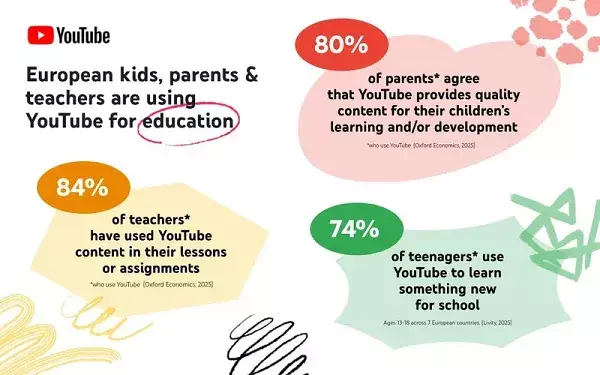YouTube has long been synonymous with entertainment—viral videos, music, gaming, and comedic skits dominate its landscape. However, recent data underscores a profound shift: the platform’s role as an indispensable educational resource for young audiences. This transformation not only underscores YouTube’s versatility but also positions it as a vital component of modern learning environments. By 74% of teens using the platform to grasp academic concepts and 71% exploring topics purely for fun, it becomes evident that YouTube’s influence transcends mere entertainment. Its vast repository of tutorials, explainer videos, and demonstrations makes complex subjects accessible and engaging, redefining how youth interact with knowledge.
This evolution reflects broader societal changes—digital natives increasingly prefer on-demand content tailored to their individual learning paces. It challenges traditional educational paradigms, prompting educators and parents to recognize YouTube’s potential as a supplement rather than a rival to formal education. The platform’s ability to adapt to these needs marks a seismic shift in how knowledge dissemination occurs in the digital age, emphasizing that entertainment and learning are not mutually exclusive but can coexist harmoniously.
Educational Content as a Catalyst for Broader Acceptance and Regulation Avoidance
The strategic importance of highlighting YouTube’s educational benefits extends beyond user engagement; it directly influences regulatory scrutiny. Governments across Europe and Australia are contemplating restrictions on social media access for minors, aiming to safeguard young users from potential harm. These proposals, often targeting access under 15 or 16, threaten to limit the very aspects of YouTube that foster education and safe exploration.
YouTube’s efforts to showcase its educational value are intentional, aiming to carve out an exemption that preserves its access privileges for youth. Citing reports like Oxford Economics’ findings—where 84% of teachers integrate YouTube into their lessons and 80% of parents trust its content—the platform seeks to position itself as a trustworthy educational ally. This approach is strategic; if regulators recognize YouTube’s positive influence on learning, they may be more inclined to exempt or restrict the platform less severely, acknowledging its role in promoting knowledge rather than merely consuming entertainment.
However, such efforts are met with skepticism. Governments may persist in framing social media as inherently risky, regardless of educational benefits. The challenge for YouTube is not only demonstrating its value but also navigating complex regulatory landscapes that are often driven by public concern over screen time and online safety. The recent example of Australia’s decision to include YouTube within social media restrictions exemplifies this ongoing battle.
Balancing Benefits and Risks in a Complex Digital Environment
The crux of the debate lies in balancing the undeniable advantages of YouTube’s educational content against the potential risks associated with youth engagement on digital platforms. Critics argue that unrestricted access exposes minors to harmful content, cyberbullying, and addictive behaviors. Nonetheless, the platform’s advocacy emphasizes that, with proper guidance and parental controls, YouTube can serve as a safe, enriching space for learning.
Parents and educators play a crucial role in mediating young users’ experiences. Surveys reveal widespread trust: 80% of parents believe YouTube offers credible content, and teachers harness it as a valuable teaching tool. This suggests that with responsible oversight, the platform’s educational potential can be fully realized. Yet, the challenge remains that regulatory bodies often emphasize restriction over integration, fearing that current safeguards may not be sufficient.
The ongoing tug-of-war reflects a larger societal dilemma: how to embrace the opportunities of digital learning while mitigating its hazards. YouTube’s mission now extends beyond content creation; its future depends on establishing trust, promoting responsible usage, and proving that its educational benefits outweigh the risks. Only then can it hope to influence policy and secure a future where digital learning freely flourishes without unwarranted restrictions.

